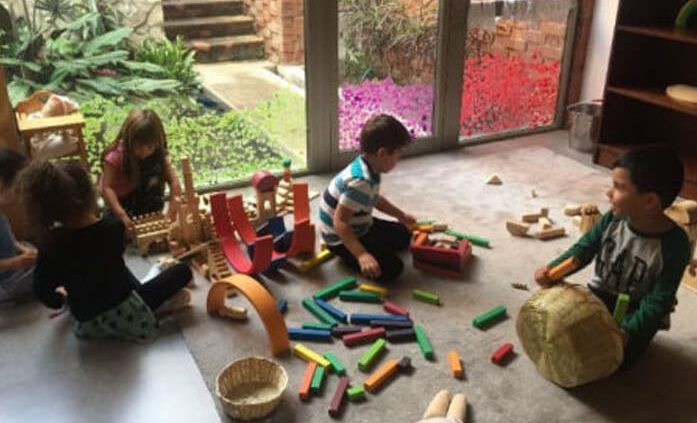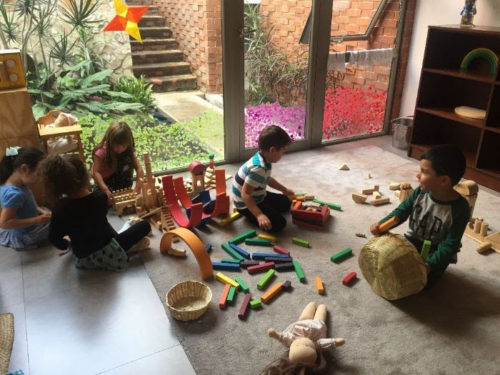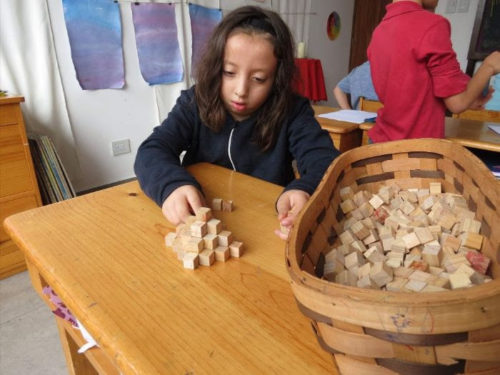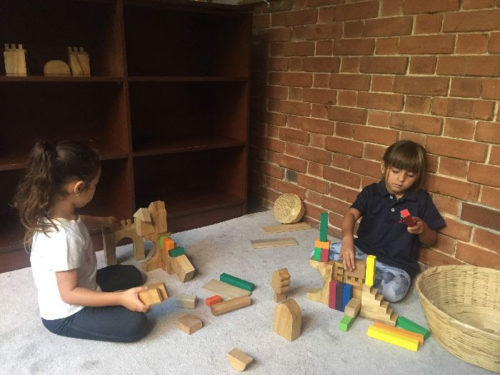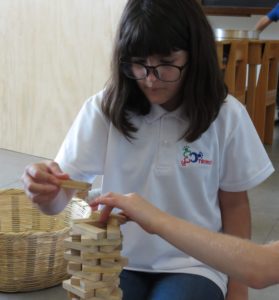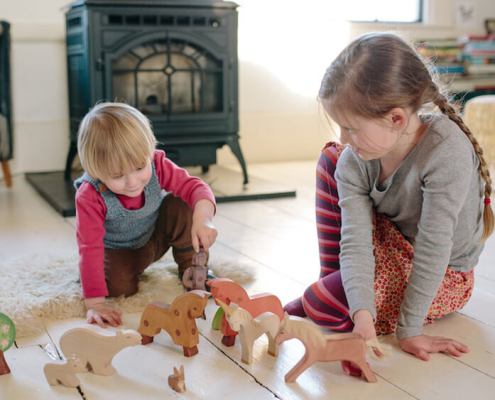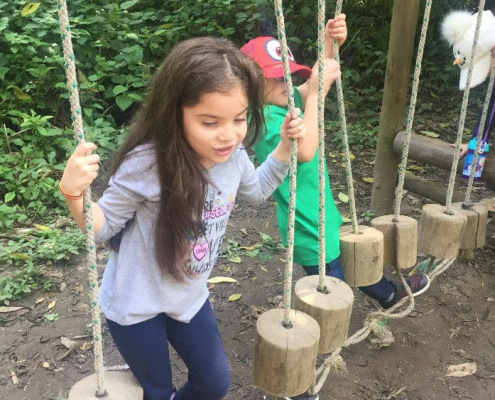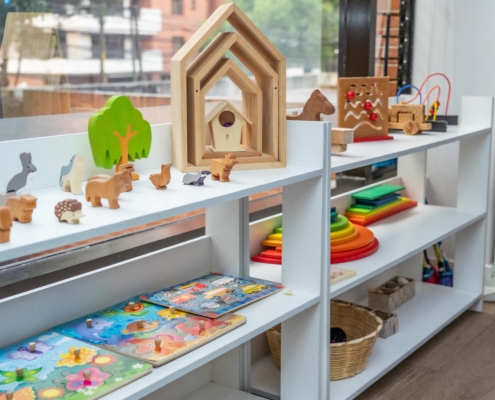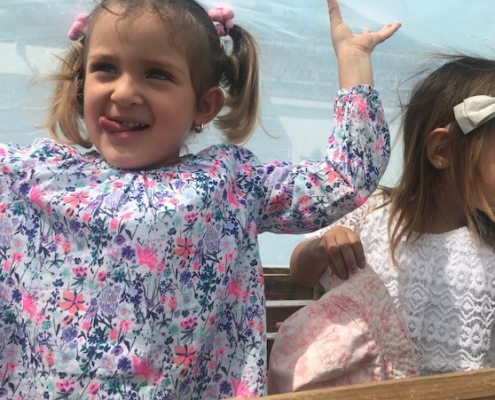Toys that support our children’s development
By April Misfud
When choosing toys for our children we must think only what will support and encourage creative play.
Having toys made with natural materials is important in supporting our child’s senses. However, toys made of plastic are not going to ruin our children. The most important question to consider when choosing your child’s toy is… Does it allow the child to freely imitate the world around them? During play, they are learning to do all the things they see and experience, props for costumes are fantastic. Toys are not necessarily toys, they can be real tools or open-ended toys. Open-ended toys can become all they can dream them to be. Usually, the fewer details the more potential; for example, a beautiful stone could become a train or a cow.
Toys can be found everywhere, in nature, in the cupboard of old things, etc. The main thing to consider are the possibilities rather than set costumes or themed toys. When purchasing toys try to avoid characters from movies or where only one scenario is possible. We want to encourage the child’s imagination to be unlimited in every way possible.
- Here is a list of things to consider:
- Does it hold natural beauty?
- Does it feel good, will the toy develop the child’s sense and appreciation of aesthetics?
- Does it leave room for imagination? Think open-ended toys…
- Will it inspire imitative play? Think practical toys, for example, kitchen utensils so they can imitate that which they see and experience.
If the answer to these questions is yes, then it´s the perfect toy.
Toys such as lego are great and can hold the child’s focus for many hours. However, nowadays to buy leggo means you’re buying a set theme which is designed for the child to assemble in one way. If you can find older sets of lego or try to remove some of the themed pieces then it would become a more supportive toy for the child. Buy the lego you want, then find a beautiful bag or box to keep it in, removing all the packaging and pieces that are not supportive to their imagination. Gift the child a set of lego that is ready for play and is beautiful. Perhaps add some stones, shells or pieces of fleece (which could become sheep or other animals), sticks, leaves, driftwood or other things to extend their play. Colored silks are great to add as they can become rivers or grass areas.
I don’t intend to encourage stress around the toys surrounding your children but I do want to encourage a healthy way of thinking. If the child’s environment is supportive then some plastic toys are not going to harm your children. Quality toys should always be the first option, and here is an area where quality over quantity is very important. Play toys can either nourish or dull our children’s imagination. I would like to offer a list of considerations towards creating a supportive environment for our children.
- A peaceful home environment.
- Not overstimulated by toys or by electronic media.
- Plenty of open-ended and creative toys or playthings.
- Are able to partake in meaningful work around the house.
Here´s a list of supportive toys for children from 3-6 years and may continue to satisfy and support their imagination until the end of class 2.
- Dressing Up cloaks, crowns, swords, hats, belts, simple tunics and scarves.
- Wooden bricks as many as possible and not just the little ones either.
- Animal Figures are wooden or plastic.
- Cardboard Boxes of all sizes: can be caves, stoves, barns, houses…
- Pots, Pans, Cooking Utensils.
- Real Tools for helping around the house and garden.
- A Selection of balls.}
- Play cloths for making tents, wings, headwraps, rivers, grass, veils…
- Natural Objects pine cones, driftwood, smooth stones, seashells.
- Puppets, glove puppets, table puppets, stick puppets, finger puppets.
- A wooden frame can be a stage, store counter, car window, stable door…
- Cars, planes, trucks, etc. metal or plastic.
- Simple wooden puzzles.
- Dolls and stuffed animals a few beloved companions is probably better than an endless collection of cheap and garish fairground dolls and animals.
- Train ser wood or plastic; something to pull or push, nor something to watch.
- Sandbox.
- Stumps to jump on and off and to have tea parties on.
- Various Swings rope, tire, metal.
- Logs for climbing, balancing, sitting or being horses or dragons.
- Playhouse or Den the simple the better.
- Places to… hide, dig, dream, plan, explore, get wet.
I hope you enjoyed this article and I would like to encourage you to apply this way of thinking towards the quality and quantity of your child’s screen time. Including movies and apps. My opinion is that these concepts on screens are fixed, set themes that don’t encourage the child to pull their imagination from within themselves out into the world. I understand how supportive a screen can be to a parent who just needs a bit of child-free time, in these cases the consideration of the quality of what is being absorbed by your child is extremely important. Could a warm pot of fresh playdough with essential oil hold their attention? If you choose screen time there are supportive shows like Playschool. Consider the quality of that which they consume.
If you enjoyed these ideas please research Waldorf parenting for more inspiration and considerations. It is also beneficial for you to research the effects that screen time can have on your child’s developing imagination and their brains so that you can make your choices from an informed position. This is a good article to start with https://denverwaldorf.org/media-mindfulness/.
(With inspiration from the First Grade Syllabus created and written by Donna Simmons)

